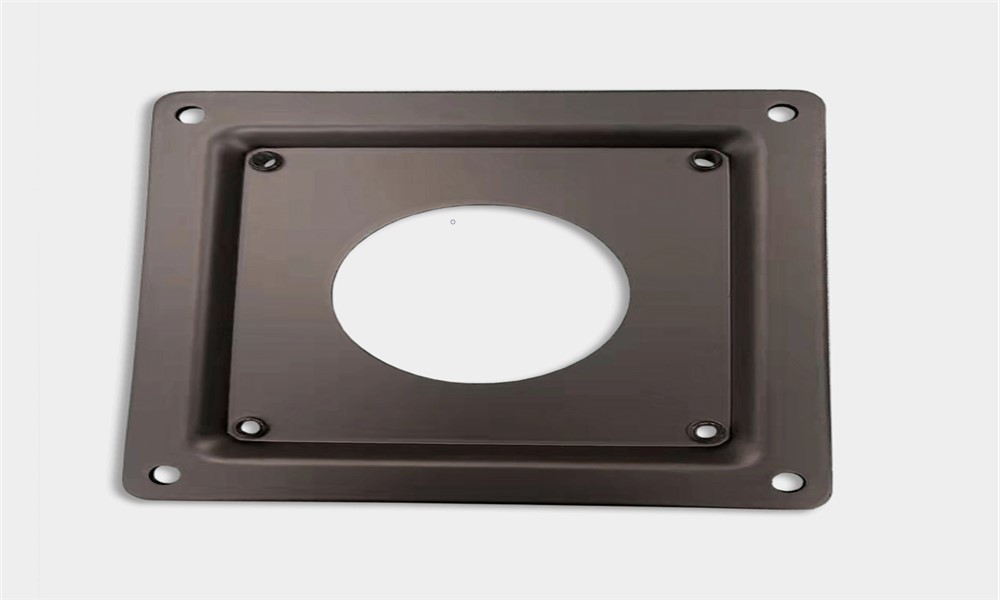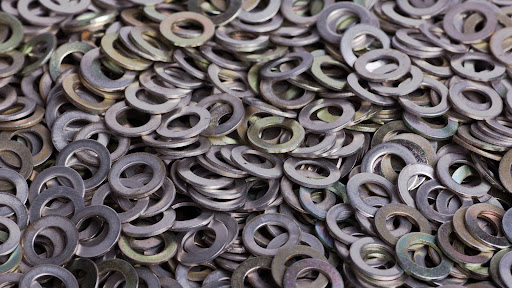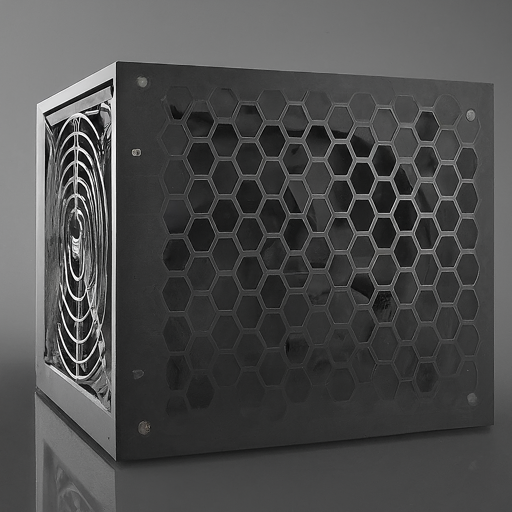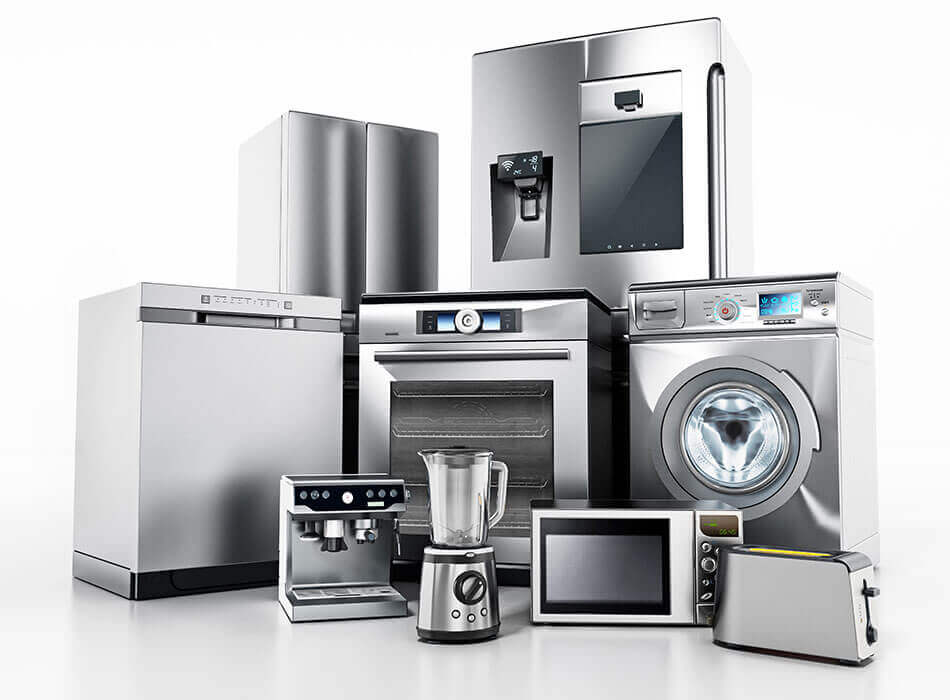
Hardware metal is an essential component in many industrial and consumer products. The process of manufacturing hardware metal has evolved over the years, with stamping technology becoming a popular method. In this article, we will explore the benefits of using stamping technology to process hardware metal.
What is Stamping Technology?
Stamping technology is a metalworking process used to create a variety of shapes and designs by pressing sheet metal or other materials between two dies. The dies, which are made of hardened steel or tungsten carbide, shape the metal into the desired form.
The stamping process can be done manually or with automated machines. The use of automated machines allows for increased speed and accuracy, resulting in a more efficient manufacturing process.
(Further reading: What is the difference between stamping being done manually or with automated machines?)
The Benefits of Stamping Technology
The benefits of stamping technology include high production efficiency, the ability to produce complex shapes, stable quality and high precision, material and energy saving, and simple operation:
-
High Production Efficiency and Convenient Operation
The primary advantage of metal stamping parts processing is its high production efficiency and convenient operation. Using punching dies and stamping equipment, the stamping machine can complete dozens or even hundreds of strokes per minute, resulting in a workpiece per stamping stroke. When using special stamping oil, this speed can even reach over a thousand times per minute. This makes metal stamping processing ideal for mass production.
-
Large Standard Designs and Complex Shapes
Metal stamping parts can be processed into parts with large standard designs and complex shapes. From stopwatches as small as clocks to as large as car longitudinal beams, covering parts, and more, the possibilities are endless. Additionally, the cold deformation hardening effect of materials during metal stamping leads to high strength and rigidity, making the parts versatile and strong which makes it ideal for use in a variety of industries, including automotive, electronics, and architecture.
-
Stable Quality and High Accuracy
During the processing of metal stamping parts, the mold ensures the standard and shape accuracy of the parts while generally not damaging their surface quality. This results in stable quality and high accuracy of the workpiece. Furthermore, the life of the mold is generally long, contributing to the consistency and reliability of the process.
-
Material and Energy Saving Processing Method
Metal stamping parts processing is a material-saving and energy-saving processing method because it generally does not generate chips and debris, requires less material consumption, and does not require other heating equipment. As a result, it's a cost-effective process that's suitable for mass production.
-
Simple Processing Operation
The processing operation of metal stamping parts is simple, and there is no need to program before processing. Additionally, automatic punching machines equipped with an automatic feeder can complete one person to handle multiple pieces of equipment, reducing production costs.
Stamping Technology in the Manufacturing Process
Stamping technology is often used in the early stages of the manufacturing process to create the initial shape or form of a metal part. This process is known as blanking and involves cutting a flat piece of metal into a desired shape.
Once the metal has been blanked, it can then be stamped to create the final shape or design. The stamping process can also be used to create holes, indentations, and other features in the metal.
(Further reading: 7 Process Characteristics of Metal Stamping Parts)
Materials Suitable for Stamping Technology
Stamping technology can be used with a variety of materials, including aluminum, brass, copper, stainless steel, and carbon steel. The thickness of the material can vary depending on the type of stamping press being used.

The Application Industries for Stamping Technology
Stamping technology can be applied to the automotive industry, electronics industry, and architectural industry:
-
Stamping Technology in the Automotive Industry
Stamping technology is widely used in the automotive industry to create metal parts such as body panels, chassis components, and engine parts. The use of stamping technology in the automotive industry allows for the creation of complex shapes and designs, resulting in lighter and more fuel-efficient vehicles.
Stamping technology also allows for the creation of parts with high strength and durability, making them suitable for use in harsh environments and demanding applications.
-
Stamping Technology in the Electronics Industry
Stamping technology is also used in the electronics industry to create metal parts for devices such as smartphones, tablets, and laptops. The ability to create complex shapes and designs makes it possible to create smaller, more compact devices without sacrificing functionality.
Stamping technology also allows for the creation of parts with precise tolerances, ensuring that they fit together seamlessly and function as intended.
-
Stamping Technology in the Architectural Industry
The architectural industry needs reliable, durable, labor-efficient, and cost-efficient building solutions for designing and producing new architectural projects and meeting the particular needs for components that can withstand a wide variety of environmental and temperature conditions and maintain strength and durability during the manufacturing process and in their final building architectural application.
Stamping technology is also used in the architectural industry to process hardware metal. The process is utilized to create various metal stamping parts for the structural building including floor wood trusses, roof wood trusses, wall panels, wood frames, etc. which are required for the architecture of buildings, bridges, and other structures.
Limitations of Stamping Technology
While stamping technology offers numerous benefits, there are also limitations to its use. The process is most suitable for creating flat or relatively simple shapes and designs. More complex shapes may require additional manufacturing processes, increasing production time and costs.
Stamping technology is also not suitable for creating parts with extremely tight tolerances or high surface finishes, which may require additional machining or finishing processes.
Conclusion
Stamping technology is a versatile and cost-effective method of processing hardware metal. The ability to create complex shapes and designs, along with the high precision and efficiency of the process, makes it ideal for use in a variety of industries.
From the automotive industry to the electronics and architectural industries, stamping technology is an essential manufacturing process that has proven to be reliable, efficient, and cost-effective. If you have any metal stamping needs or questions, welcome to contact us. We look forward to hearing from you and helping you take your products to the next level.

In the world of manufacturing and engineering, where precision reigns supreme, every component contributes to the final product's functionality, safety, and efficiency. Often overlooked yet essential, precision metal shims play a vital role.

In the world of electronics, power supply units (PSUs) play a critical role in converting electrical energy, ensuring devices receive the correct voltage and current for optimal operation. To safeguard their components and manage heat, PSUs require durable and efficient enclosures. This is where metal stamped power supply shells excel.

Custom-stamped appliance components are the backbone of products we rely on daily, from refrigerators to washing machines. To ensure appliances work efficiently and safely, these components must be manufactured to precise specifications. This involves challenges such as ensuring accurate dimensions and choosing materials with the right properties for each part.
